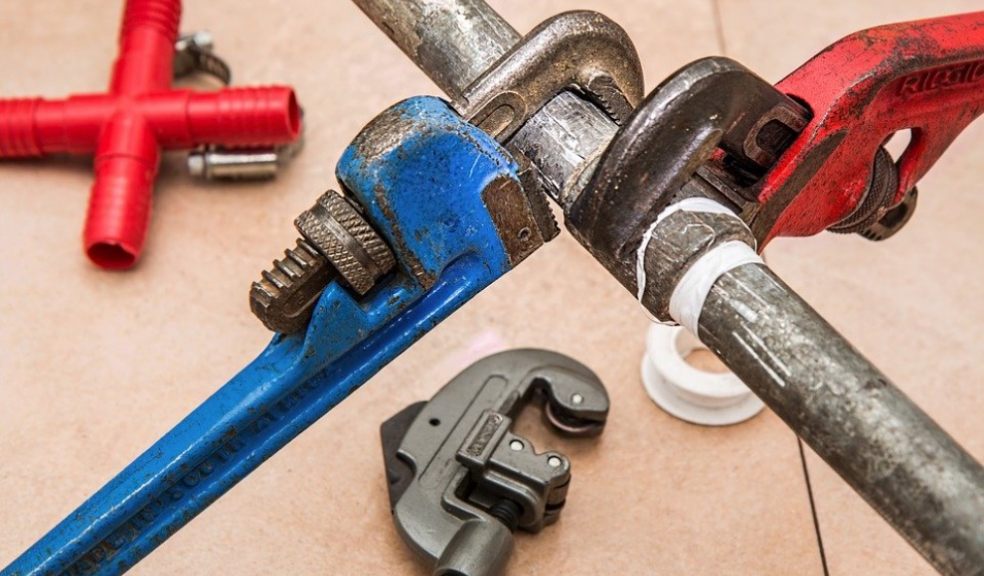
Water damage in the home: The causes, risks and solutions you need to know
Maintaining your home is essential. The more care you take of your property, the less likely it is to sustain damage and fall apart. Unfortunately, accidents happen, and sometimes even the best-maintained properties can have things go wrong.
While such instances might be unavoidable, it’s essential you deal with them as soon as possible. Otherwise, there’s a chance they could cause expensive and irreversible damage to your home, which isn’t what you want.
Water damage can be particularly problematic for this, but to combat it, you first need to know what causes it.
Issues with the plumbing
If water is damaging your home, the most likely culprit is the plumbing. After all, this is responsible for taking water in and out of your home, so it makes sense that issues with this can result in leaks. There’s also the fact that most of the plumbing in your property is hidden within the walls, so it’s not always easy to tell if something’s wrong with it.
As for why your pipes might start leaking, the reasons range from blockages and high pressure to corrosion and old age.
Even pipes that you can see are sometimes still problematic, especially if they’re outside. In areas where temperatures drop below freezing, there’s always a risk of these pipes freezing and bursting. You can try and stop that from happening by employing the tips recommended here, which also offers advice on what to do if a pipe does burst.
Other potential causes
Aside from your plumbing springing a leak, water damage is also a possibility if there’s a problem with your roof. Cracked or broken tiles, blocked gutters, ice dams, or poor installation all allow precipitation into the home, which leads to problems. This is particularly troublesome if you live somewhere with a lot of rain or snow, so it’s imperative that your roof is always in good condition.
Other potential causes of water damage may include old and disintegrating water heaters and a damaged connection to your washing machine.
The risks of water damage
Water damage in the home is a significant cause for concern. For one, it promotes the growth of toxic mould, which can be hard to remove, even after you’ve fixed the issue. Their presence can cause allergic reactions and heavily impact those with existing respiratory issues.
Other harmful microorganisms can develop from standing water which can quickly develop under a leak. The viruses and bacteria that emerge from this can increase the risk of you contracting something like pneumonia, which could have nasty consequences.
There’s also the risk that a leak can interfere with the electrics, which may leave you without power or potentially put you in danger of electrocution.
How to trace the leak
Identifying the cause of water damage isn’t always easy. For instance, you might spot a leak coming from the ceiling, but that doesn’t mean the problem area is right above it. It’s possible the water has travelled from elsewhere and has only just settled here.
For that reason, thermal imaging can prove useful. This can identify changes in surface temperature caused by the water, making it easy to track the source without being too invasive.
Ultimately fixing the leak might require a bit of destruction, given the problem might be in an inaccessible area. However, this is worth it to avoid damages due to ceiling leaks.
It’s worth checking if you have Trace and Access on your home insurance policy beforehand, as this will cover the detection and exposure of your leak. It doesn’t include the actual fixing of the problem, but it still alleviates some of the financial burden of having water damage in your home.
Fixing the source of the problem
Once the source of the problem is identified, a professional will be able to fix it. How they do this depends on what’s causing the leak in the first place.
If it’s an old or damaged pipe in your wall that’s the issue, they’ll need to get inside and replace it. If the problem is to do with your roof, you’ll need a contractor to come and repair whatever’s wrong.
Unfortunately, when it comes to water damage, dealing with the source is usually only half the solution. In some cases, it’s the easy part of fixing the problem because you then have to resolve the issues caused by the leak.
Dealing with the aftermath of water damage
The sooner you identify a leak and get it fixed, the less of a clean-up operation you have to deal with afterwards. This is pretty essential, given how expensive and time-consuming this can be.
Anything that’s suffered water damage needs to go, whether that be furniture or part of the home itself. You can dry out a wall as much as you want, but if mould has begun growing on it, it’s not just going to disappear. It’s essential to identify how much of your property is affected and then call in a professional to get it replaced. You can deal with throwing out damaged and unsalvageable furniture yourself but pulling up rotting floorboards and knocking down walls is best left to an expert.
Not everything will need to go. You may have luck holding onto some stuff with the help of fans and dehumidifiers. However, the extent of what you can keep will depend on how long the leak was around for and how much damage it caused.
If you’re worried about the safety of your home following significant water damage, it’s always worth having someone come and inspect the property for you. They’ll be able to identify any hidden impacts of the leak and let you know if the structural integrity of the house is intact or not.
As soon as you spot any sign of water damage in your home, deal with it. Even if it’s just a tiny leak, you’ll save yourself a lot of hassle by resolving it now rather than later. Plus, you never know when something minor could be part of a bigger problem, so it pays to act fast.













